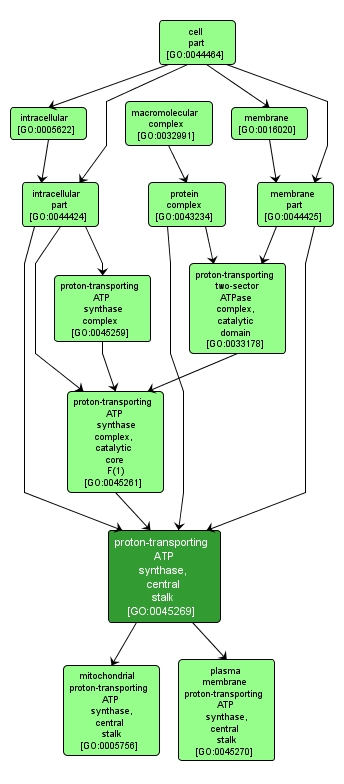GO TERM SUMMARY
|
| Name: |
proton-transporting ATP synthase, central stalk |
| Acc: |
GO:0045269 |
| Aspect: |
Cellular Component |
| Desc: |
One of two stalks that connect the catalytic core of the hydrogen-transporting ATP synthase to the membrane-associated Fo proteins; rotates within the catalytic core during catalysis. |
Synonyms:
- hydrogen-transporting ATP synthase, central stalk
|
|

|
INTERACTIVE GO GRAPH
|














